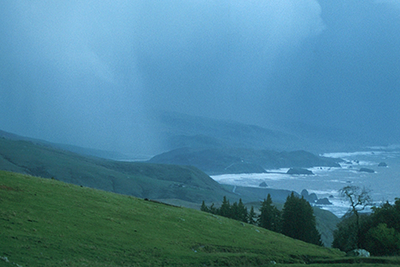Navigating the Science of Atmospheric Rivers
In this feature story published by the DOE Office of Science, discover how EESM-supported research is advancing the understanding of atmospheric rivers—large sections of the atmosphere full of water vapor—in water and climate cycles.
Ice crashed down on the windshield of the small plane. Rain pounded the wings. Water sloshed inside important instruments.
For most pilots, this would be a nightmare.
But still, the plane climbed up through the clouds. It ascended more than 5,000 feet above the ocean. For this team, these conditions were ideal. In fact, they had been waiting for this moment.
This aircraft, along with three other planes and a research boat, was collecting data on atmospheric rivers—large, narrow sections of the atmosphere that run from the tropics to higher latitudes. Each carries about the same amount of water vapor as liquid water flowing through the mouth of the Amazon River. Upon reaching land—especially coastal areas next to mountains—they jettison much of this moisture. That causes massive amounts of rain and snow to fall.
The research involved probing observations, satellite data, and climate models to explore atmospheric rivers’ role in the water and climate cycles. But navigating through the data proved to be trickier than the scientists expected.
It was all a part of the Atmospheric Radiation Measurement (ARM) user facility’s 2015 ARM Cloud Precipitation Experiment (ACAPEX) campaign, the largest study of its kind focused on capturing data from atmospheric rivers. L. Ruby Leung, principal investigator for EESM’s Water Cycle and Climate Extremes Modeling project and chief scientist for DOE’s Energy Exascale Earth System Model (E3SM) project, led the ARM field campaign.
There were only a handful of papers in the years after researchers first described atmospheric rivers in the 1990s. But the field exploded in the last decade. In 2015 alone, there were more than 200 scientific papers that mentioned them. “There were a few studies in the mid-2000s that really caught a lot of attention,” says Leung, a Battelle fellow at Pacific Northwest National Laboratory.
Those studies, Leung emphasizes, underlined both atmospheric rivers’ international nature and big impacts. “It caught the attention of water managers. A much broader community became interested in this.”
Read the full feature story on the DOE Office of Science website.

